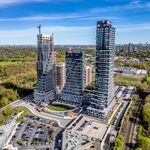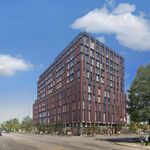I like numbers myself, and I appreciate your efforts. Obviously it's impossible to numerically measure something that is an intrinsic appeal, but perhaps we can try and refine it further.
I think to make a more accurate quantitative assessment there are some things that need to be kept in mind. In fact if someone could have all the stats, and write a good computer program, it could be calculated in real time, but I degress. It is also important to note that 'skyline' means, how your buildings would look from basically any vantage point. It is reasonable to narrow this down, for instance, Toronto vs. Chicago from the respective lakes 2km away. Or from the side 2km away or whatever. But either way it has to be based on a VIEW of the buildings, instead of just calculating all buildings within the city. That said, a real-time computer render with calculations would be invaluable to measuring this from various different viewpoints (that are possible due to normal pedestrian/traffic numbers and from points that people usually look at the skyline from).
So the vantage point needs these things to be kept in mind:
1) Is this somewhere a normal person visiting or living in the city would actually look up? (i.e. a relatively high-traffic location, not some place that only crazy hardcore skyscraper enthusiasts could get to)
2) Is this view actually possible? (i.e. no billboards, nothing obstructing)
3) What could you see from the view due to other things blocking you?
4) How much of the skyline could you actually see from the view. For instance, if you stand in certain places you probably could see North York and Downtown at the same time, but then all the buildings would be so tiny it wouldn't matter at all.
Here's what needs to be factored in if we want to make a good comparison once we've figured out the vantage point:
1) The actual heights of the buildings instead of the number of floors, because we're talking about how the building LOOKS instead of what's in the inside. This would take into account:
a) How high the building looks from your vantage point. Not just the built height of the building, but how high it actually is from where you are standing. This includes elevations. For Toronto and Chicago this may not be as important, but for places like Manhattan and San Francisco it's extremely important.
b) Antennas and the like should be of course counted for less, but they still COUNT.
2) The variation of height within the buildings. For instance, Chicago looks very impressive because there are a few supertalls that are SCATTERED, giving a good variation of heights. But say Hong Kong looks less impressive thanks to IFC 2 because it's so massively big, in all pictures all the rest of the bulidings look like they are nothing, even though in real life you realize they are massive. In Toronto, you can compare this to the fact that First Canadian Place and Scotia Plaza are both so huge, even 40-story condos like the Waterpark condos look like nothing.
3) The spread of the buildings. This would be a simple TWO DIMENSIONAL view of the spread from where you are standing. For instance, standing at where the Gardiner turns into the Don Valley Parkway, you get a ridiculously good and huge view of the skyline. From the lake, the skyline is much, much thinner and thus less impressive. Chicago's is quite well spread out along the lake, but from other angles not as impressive.
4) How the buildings appear from streetlevel. Again this is a point of view thing. Because of Toronto's grid pattern, standing anywhere in the city, you can very easily see where the skyline ends. And if you're at Bay and Wellington, you can see that it seems to completely die about 500m from where you are. In NYC looking down the Avenue of Americas from Central Park, it looks endless. In Hong Kong because of the curvy roads, you can't even see the end and it's skyscrapers forever. This factor takes into account not just the spread of the buildings (#3) but also the two-dimensional density of the buildings. Obviously from a certain point of view, a simple wall of staggered bulidings Dubai style would look sufficiently endless, while from other views it would look kind of silly (as is Dubai from other angles).
5) How much the skyline 'ramps up'. This is not important for water shots, but in real life.. if the skyline were to go from smaller to increasingly bigger buildings until you get to the biggest, like a sort of mountain it is usually very pleasing. In Toronto's context, this would be the same as looking downtown from Panorama on top of the Manulife center vs looking from the lake (where you get the wall effect).
Of course that is thinking of the factors in a visual way. If this were a fully computerized numerical model, you would simply do the following. From any point of view, pick a section of your vision (i.e. 90 degrees wide directly in front of you, looking up at 15 degrees from the ground), and then calculate how much sky is blotted out by buildings. And then to factor in #5, you'd see how much skyline is blotted out by more skyline up until the tallest buildings. i.e. in Toronto if you had a smaller building blotting out the bottom of First Canadian Place it gives the skyline more depth, but generally anything BEHIND First Canadian Place doesn't matter because it's the tallest building anyway. You would also need to give a score for variability in skyline so that the supertalls are well spread out giving a good overall feel.
That would be the skyline impressiveness in the most quantitative manner possible without taking into account other natural settings or architecture.
To do this, you'd need to have a very complete render of the city in 3-d then calculate it that way. Or what you can do is take numerous photos from popular viewing locations with the camera set exactly the same way. Then use covered sky to uncovered sky calculations to see how much is seen.






